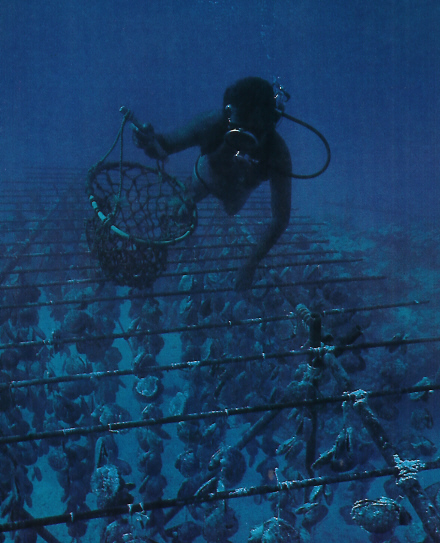Economics and Pearl Farming
The pearl oyster industry has experienced substantial economic change particularly in the last 50 years. It has been transformed from an industry dependent solely on wild catch to one that depends mainly on the culture of oysters, either taken from the wild, then seeded and cultured, or on oysters raised in hatcheries and then grown out. The structure of the industry has also changed due partly to market developments and new technologies and the spread of knowledge about techniques for culturing pearls.
According to Love and Langenkamp (2003), South Sea pearls obtained from Pinctada maxima and Tahitian black pearls, derived from Pinctada margaritifera together account for about a half of the world market by value.
The structure and nature of the pearl industry varies between countries but on a global scale, the pearl oyster industry is dominated by a few large vertically integrated companies. While some small producers have become involved in pearl production from oysters in developing countries, they are not vertically incorporated and only contribute a small fraction of global output.

© divingheritage.com |